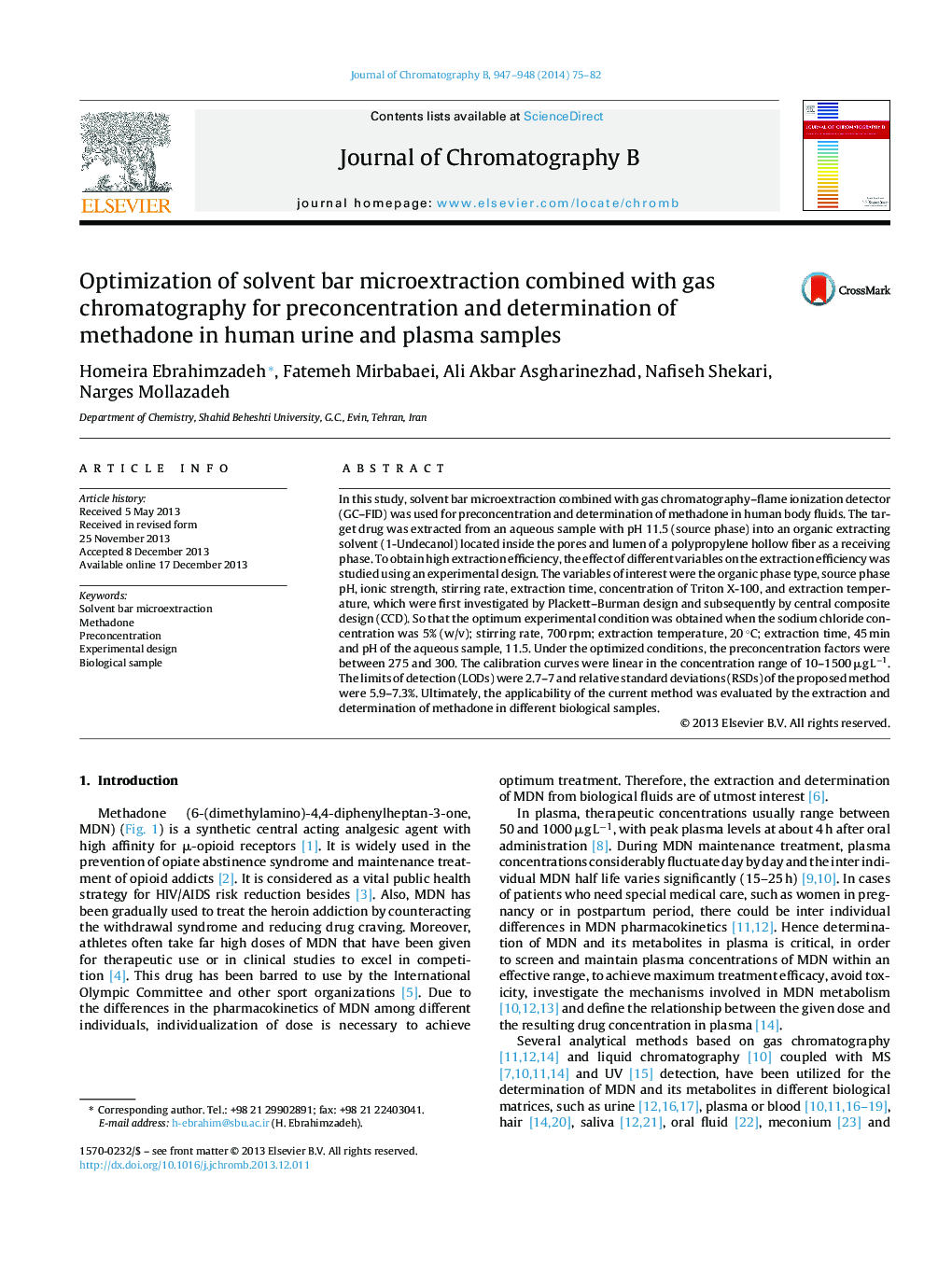| Article ID | Journal | Published Year | Pages | File Type |
|---|---|---|---|---|
| 1212848 | Journal of Chromatography B | 2014 | 8 Pages |
•SBME–GC–FID was applied for preconcentration and determination of MDN.•A multivariate strategy was applied to optimize extraction conditions.•The main advantages are simplicity, use of less solvent, high PF and wide DLR.•The SBME was successfully applied for analysis of MDN in urine and plasma samples.
In this study, solvent bar microextraction combined with gas chromatography–flame ionization detector (GC–FID) was used for preconcentration and determination of methadone in human body fluids. The target drug was extracted from an aqueous sample with pH 11.5 (source phase) into an organic extracting solvent (1-Undecanol) located inside the pores and lumen of a polypropylene hollow fiber as a receiving phase. To obtain high extraction efficiency, the effect of different variables on the extraction efficiency was studied using an experimental design. The variables of interest were the organic phase type, source phase pH, ionic strength, stirring rate, extraction time, concentration of Triton X-100, and extraction temperature, which were first investigated by Plackett–Burman design and subsequently by central composite design (CCD). So that the optimum experimental condition was obtained when the sodium chloride concentration was 5% (w/v); stirring rate, 700 rpm; extraction temperature, 20 °C; extraction time, 45 min and pH of the aqueous sample, 11.5. Under the optimized conditions, the preconcentration factors were between 275 and 300. The calibration curves were linear in the concentration range of 10–1500 μg L−1. The limits of detection (LODs) were 2.7–7 and relative standard deviations (RSDs) of the proposed method were 5.9–7.3%. Ultimately, the applicability of the current method was evaluated by the extraction and determination of methadone in different biological samples.
